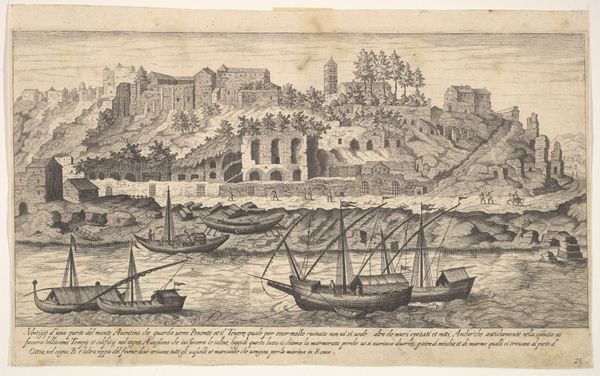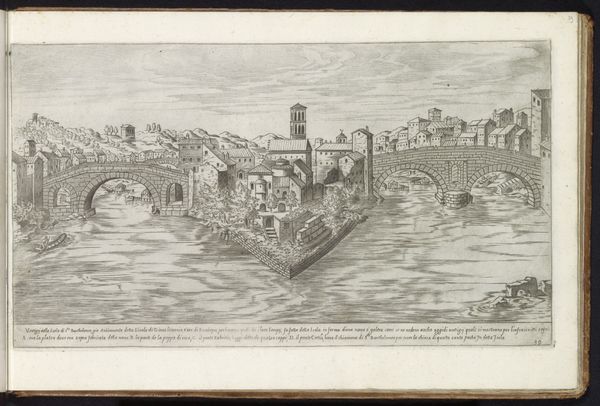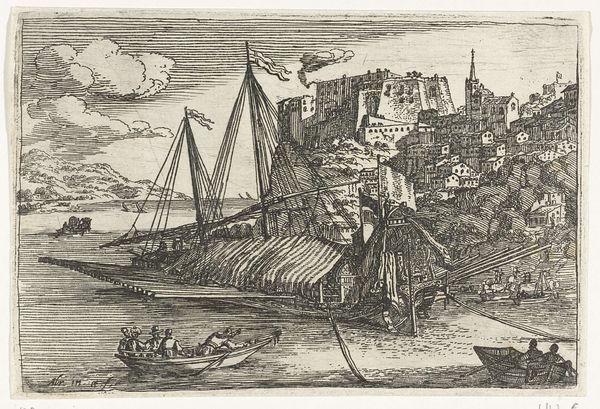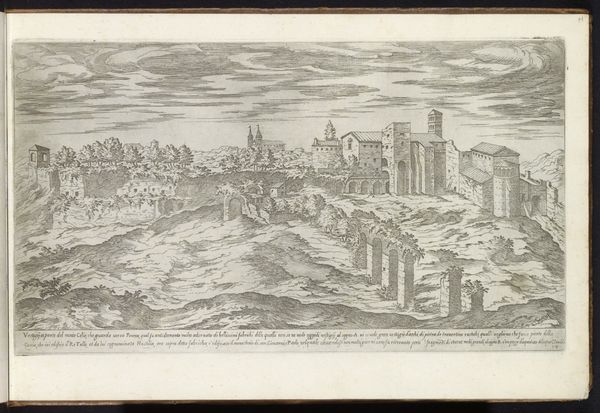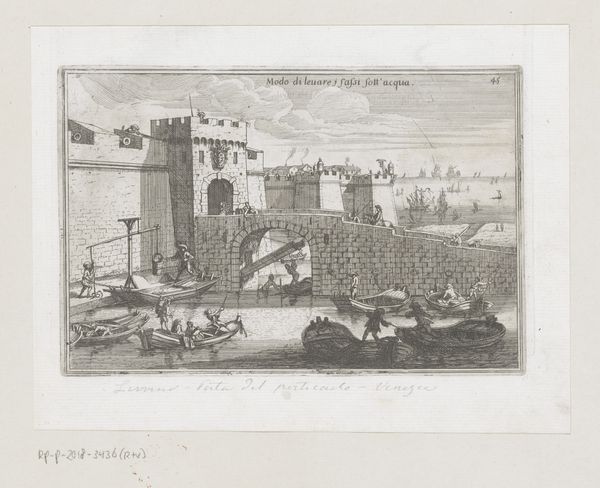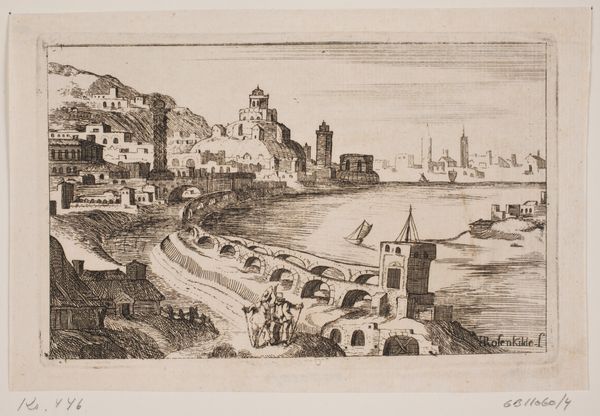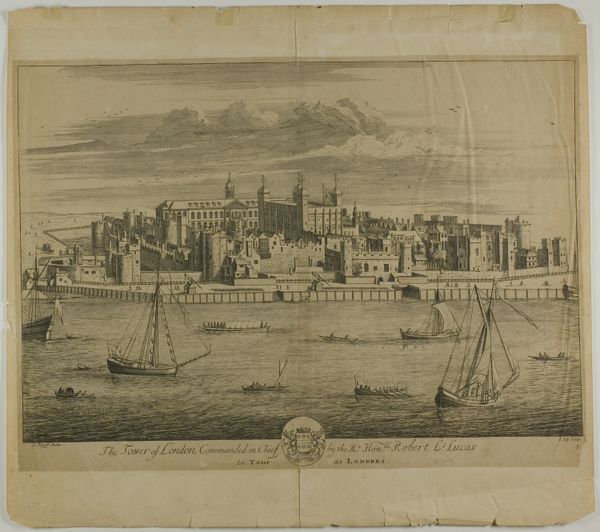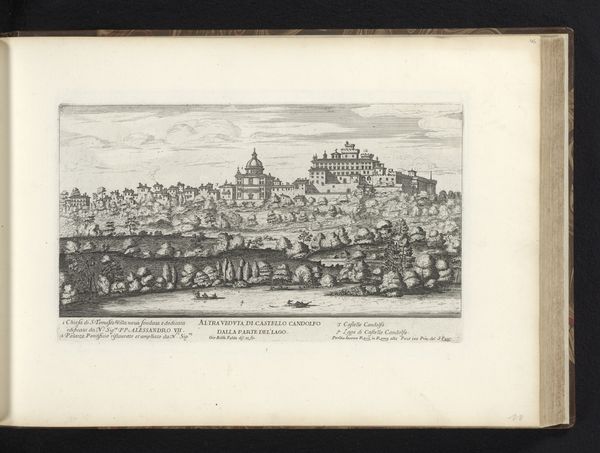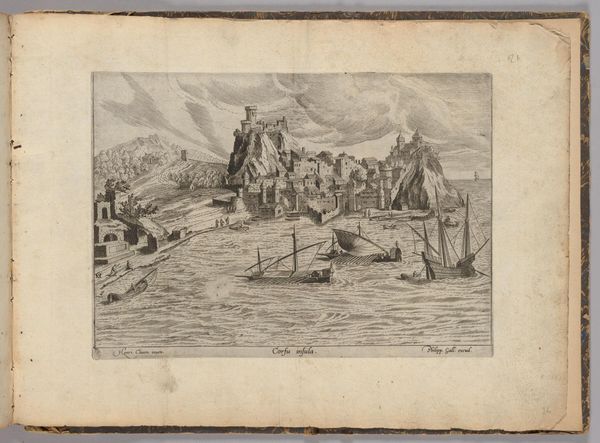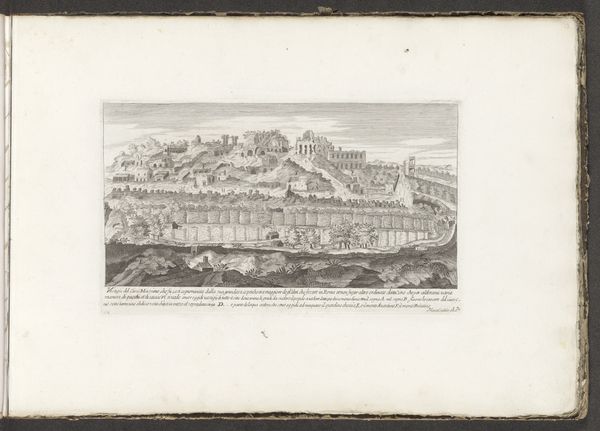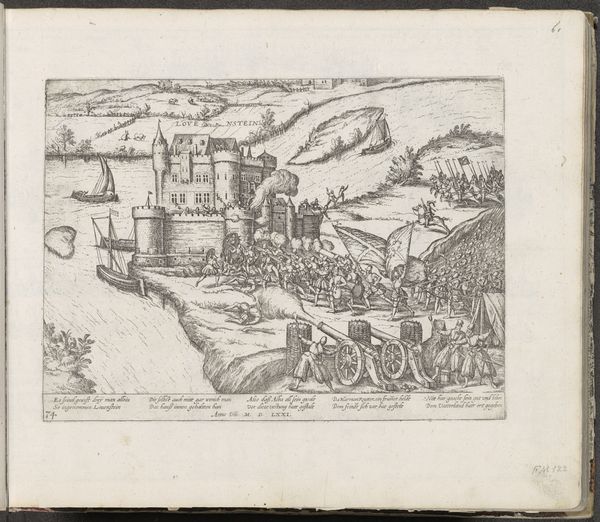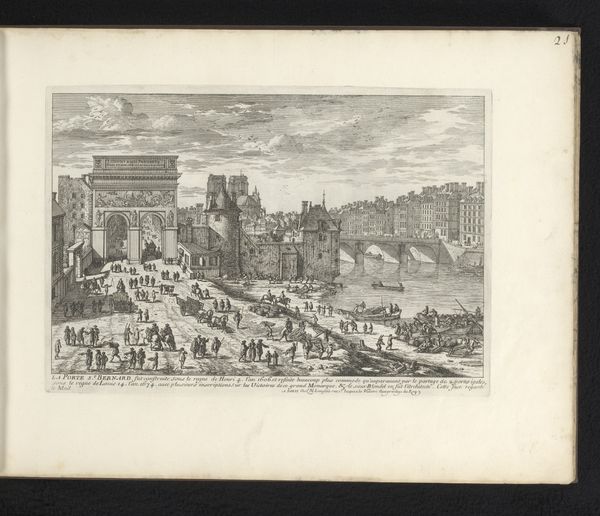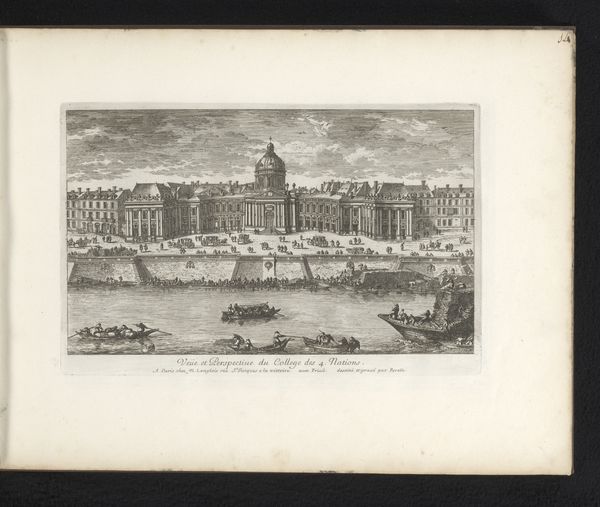
drawing, ink, pen
#
drawing
#
ink drawing
#
pen drawing
#
pen sketch
#
landscape
#
11_renaissance
#
ink
#
pen work
#
pen
#
cityscape
Dimensions: height 216 mm, width 381 mm
Copyright: Rijks Museum: Open Domain
Curator: Look at this intricate pen and ink drawing, "Aventijn langs de Tiber te Rome," dating back to 1575, created by Étienne Dupérac. The cityscape just bristles with detail. Editor: It's incredibly detailed. The stark black and white and the artist’s fine pen strokes create an almost ethereal quality, despite the somewhat pedestrian scene of boats on a river. Curator: The Aventine Hill carries enormous symbolic weight in Roman history, both in pagan times and as it became integrated into Christian Rome. Editor: The repetition of architectural forms, arches, and the positioning of that cluster of trees – it gives the entire composition a rhythm, a sense of stability…almost defiance, considering the ruinous state of some of the buildings. The water, with the ships sailing toward us, feels like a hopeful gesture. What do you make of the almost obsessive detail? Curator: Dupérac was working during a period of massive rebuilding in Rome under the popes. This kind of representation serves almost as an inventory of existing structures, both documenting the current state of affairs and imagining possible future urban landscapes. He also spent a good bit of time developing reconstruction proposals of ancient Roman structures; so it also functions as a document about how people thought about time. Editor: It becomes more than a literal depiction, then. It evokes the concept of layering – both literal and figurative – the present built upon the past, but also dreams for the future influencing that architectural language. What about the religious iconography or political statement the work transmits? Curator: The lack of explicitly religious or political symbols is significant here. While religious institutions heavily shaped Rome, their dominance is surprisingly subtle. The hill, itself, would call to mind notions of refuge, foundation and of civic virtue. Editor: In looking closely at Dupérac's work, it feels like viewing not just a cityscape but also the visual representation of a living palimpsest, a continuing symbolic project as humans and cities endlessly rebuild. Curator: Absolutely. Dupérac allows us a glimpse into how the city functioned as a historical object. The symbolic import that the place and space commanded during its time still has value for the study of Rome.
Comments
No comments
Be the first to comment and join the conversation on the ultimate creative platform.
